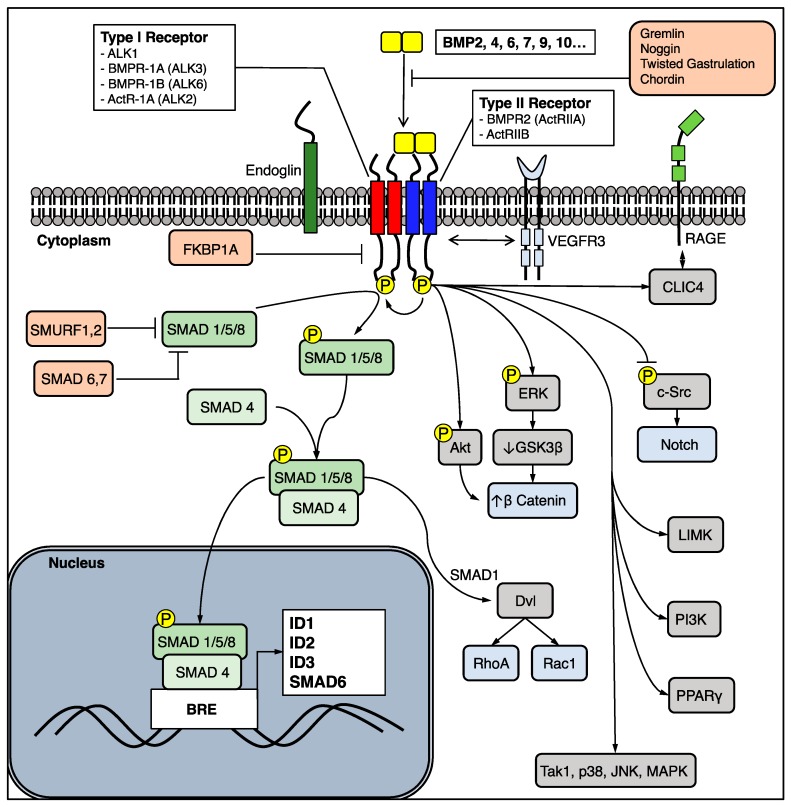Figure 1.
A schematic representation of the BMPR2 signaling pathway illustrating the potential canonical (green) and noncanonical (grey, blue) targets that can be activated. Note that downstream signaling targets are influenced by the combination of type 1 and type 2 receptors as well as the ligand. ActR = activin Receptor; Akt = protein kinase b; ALK = activin-like receptor; BMP = bone morphogenetic protein; BMPR = Bone Morphogenetic Protein Receptor; BRE = BMP response element; c-Src = proto-oncogene tyrosine-protein kinase Src; CLIC4 = chloride intracellular channel 4; Dvl = Dishevelled; Erk = extracellular signal-regulated kinase; FKBP1A = FK binding protein 1A; GSK3-β = glycogen synthase kinase 3-β; ID = Inhibitor of differentiation; JNK = c-Jun N-terminal kinase; LIMK = Lin11, Isl-1, and Mec-3 domain kinase; MAPK = Mitogen-activated protein kinase; PI3K = Phosphoinositide 3-kinase; PPARγ = peroxisome proliferator-activated receptor gamma; Rac1 = Ras-related C3 botulinum toxin substrate 1; RAGE = receptor for advanced glycation end products; RhoA = Ras homolog gene family, member A; SMAD = Mothers against decapentaplegic; SMURF = SMAD-specific E3 ubiquitin protein ligase; Tak1 = Transforming growth factor-β activated kinase 1; VEGFR3 = Vascular endothelial growth factor receptor 3.

